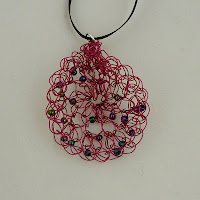I've broken them down in to two groups - under £10 and under £20 (of course, if you want to spend more you're most welcome to, but that's not the point of this little guide!) and I've taken my postage charges in to account when selecting them so you really can get them ordered & sent to you for less than the headline amount!
Gifts for under £10
If you've got a mum who enjoys a night out and would like something a little quirky to put in her handbag, how about one of these cute coin purses? They're guaranteed to make her smile when she pulls it out to find her change!
Whether you think she'd prefer fabric or crochet, these unusual corsages make a great addition to any coat or cardigan:
Or, if you've got a creative soul for a mother, why not consider one of these corsage kits? (currently only for sale through my Folksy shop) Each kit contains enough materials to make 2 corsages, and once she's made those she'll still have the instructions so can carry on making more...who knows you might end up getting one back as a gift at some point?
Gifts for under £20
Pretty much all of my coloured wirework jewellery comes in to the £10-£20 bracket, which gives you a great range of earrings, bracelets and pendants to choose from...and some lovely colours too including purple, turquoise, lilac, blue, red, hot pink and dark green.
Alternatively, if silver's more her thing, both of sizes of my silver wirework earrings slip under the £20 mark, as do the pendants (I'm afraid the bracelets just tip over at £21 plus postage).
Alternatively, if silver's more her thing, both of sizes of my silver wirework earrings slip under the £20 mark, as do the pendants (I'm afraid the bracelets just tip over at £21 plus postage).
Or, if you think she'd prefer something a bit more practical for everyday use, I have just one sturdy shopper left in stock!
So whatever you think she'd like, go on...treat your mother!


















